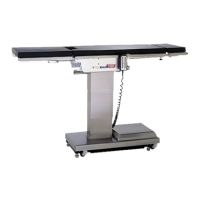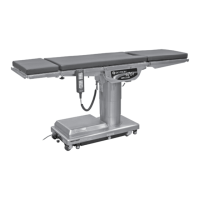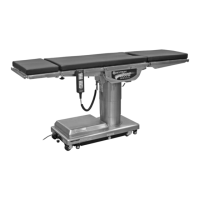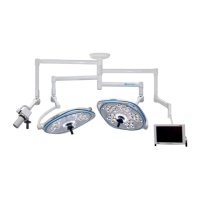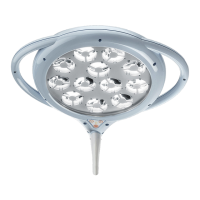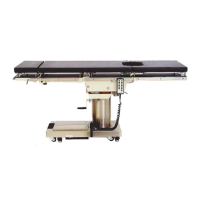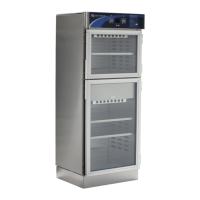Page 32
4-1. General
The complete electrical system (with the excep-
tion of the hand-held pendant control and the return
circuit micro-switches) is contained within the base
of the table. The pump motor and the hydraulic
valves are controlled electrically with the pendant
control.
The electrically operated functions are as follows:
- ELEVATION - Up and Down
- TRENDELENBURG - Head up and down
- LATERAL TILT - Right and left
- BACK SECTION - Up and Down
- LEG SECTION - Up and Down
- TOP SLIDE
- FLEX / REFLEX
- KIDNEY LIFT - Up and down
- LEVEL - Return to level
- BRAKE UNLOCK - Brake release
The power requirements are 120 VAC, 60 Hz. The
main power on-off switch is an enclosed DPST
circuit breaker type and the power cord is a three-
wire, fifteen foot long, removable, UL listed cord
with a three-prong hospital grade plug.
4-2. Components
Refer to figure 4-1 for the relationship of the elec-
trical components.
a. Wires, Connectors, Switches, Fuse - These
provide the path for the various electrical circuits.
b. Relay Box - Contains the step down trans-
former, full wave rectifier, micro-processor and
relay switches. The relay switches are activated by
the pendant control signal to the micro-processor
and in turn energize the solenoids.
c. Hand-Held Pendant Control - Contains
circuit board mounted switches and a micro-pro-
cessor which activate the relay box. Operates on
5 VDC.
d. Solenoids - These electrically open and
close the hydraulic ports of the mini-valve to direct
the fluid to the correct cylinders. They operate on
24 volts.
e. Motor/Pump Assembly - 24 VDC motor with
internal thermal protection.
SECTION IV ELECTRICAL SYSTEM

